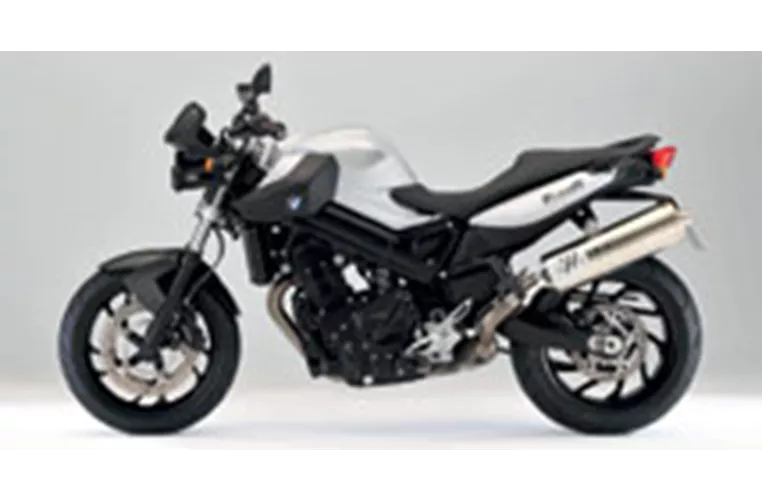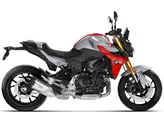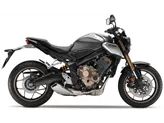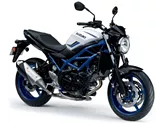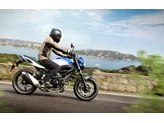BMW F 800 R 2009 vs. Suzuki SV 650 2017

BMW F 800 R 2009

Suzuki SV 650 2017
Visão geral - BMW F 800 R 2009 vs Suzuki SV 650 2017
The BMW F 800 R 2009 and the Suzuki SV 650 2017 are both naked bikes with similar specifications but have a few key differences.
In terms of the engine and drivetrain, the BMW F 800 R 2009 has an inline twin-cylinder engine with a displacement of 798cc, producing 87 horsepower and 86 Nm of torque. On the other hand, the Suzuki SV 650 2017 has a V-twin engine with a displacement of 645cc, producing 76 horsepower and 64 Nm of torque. Both bikes have a two-cylinder configuration, but the BMW has a higher displacement and power output.

BMW F 800 R 2009
When it comes to braking, both bikes have dual disc brakes at the front. However, the BMW F 800 R 2009 has four-piston calipers, while the Suzuki SV 650 2017 has dual-piston calipers. This means that the BMW may offer better stopping power and more precise braking.
In terms of dimensions and weights, the BMW F 800 R 2009 has a larger wheelbase of 1520mm compared to the Suzuki SV 650 2017's 1445mm. This may result in better stability and handling for the BMW. The seat height of the BMW is also higher at 820mm compared to the Suzuki's 785mm, which may be more comfortable for taller riders. However, the Suzuki has a smaller fuel tank capacity of 13.8 liters compared to the BMW's 19 liters.
In terms of strengths, the BMW F 800 R 2009 is praised for its high-quality components, excellent engine performance, good possible equipment options, positive chassis, and low fuel consumption. On the other hand, the Suzuki SV 650 2017 is praised for its smooth engine, playful handling, and excellent chassis.

Suzuki SV 650 2017
However, the BMW F 800 R 2009 does have a few weaknesses. It is considered to have a high price, the first gear is slightly too long, and some people may not like its aesthetics. On the other hand, the Suzuki SV 650 2017 is criticized for having weak brakes.
In conclusion, both the BMW F 800 R 2009 and the Suzuki SV 650 2017 are solid naked bikes with their own strengths and weaknesses. The BMW offers a more powerful engine and higher quality components, while the Suzuki provides a smooth engine and playful handling. Ultimately, the choice between the two will depend on the rider's preferences and priorities.
Especificações técnicas BMW F 800 R 2009 em comparação com Suzuki SV 650 2017
Prós e contras em comparação
Prós e contras em comparação
BMW F 800 R 2009
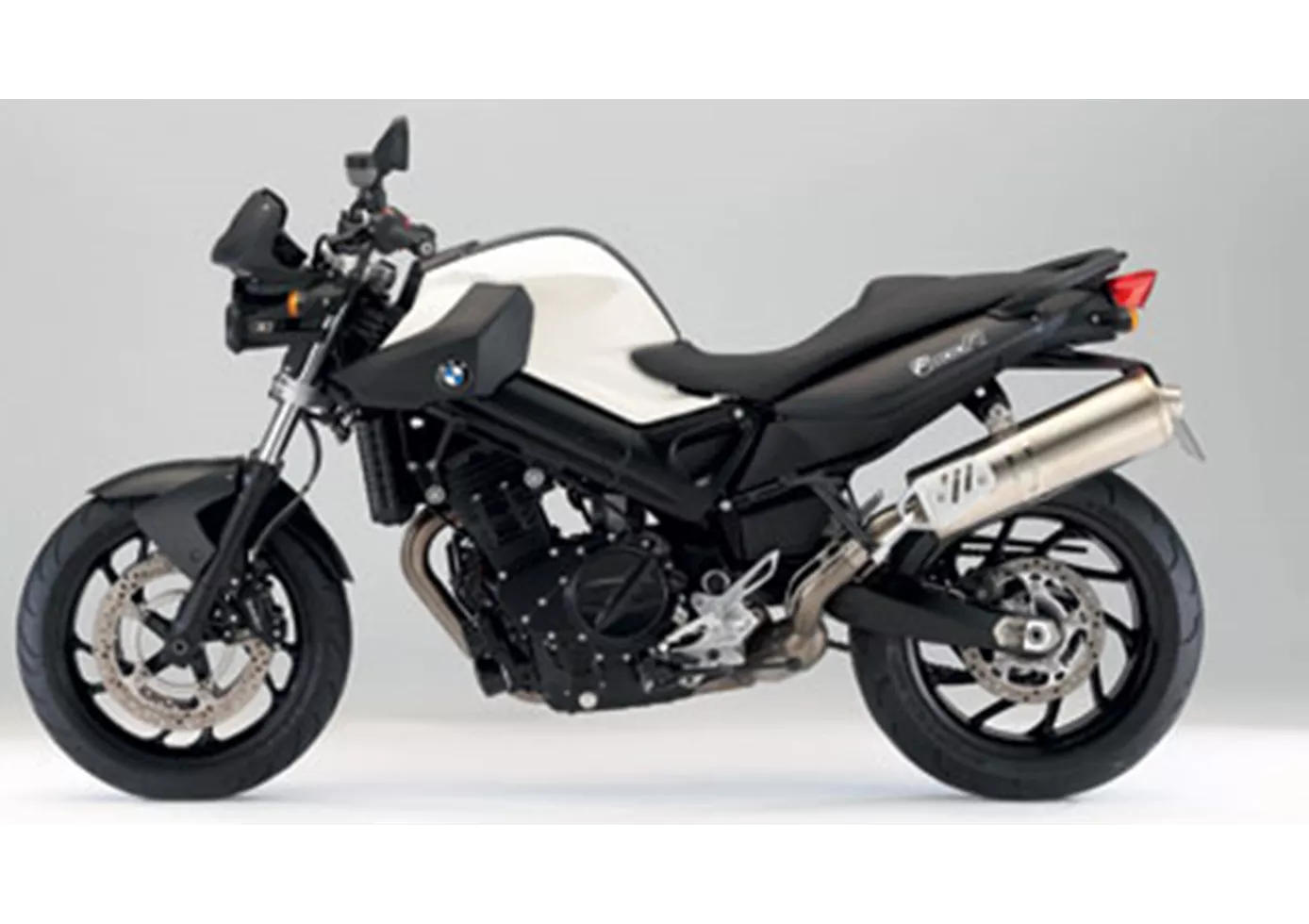
Nos anúncios, a nova BMW F 800 R surge por vezes como uma mota de mulher. Isto não é uma injustiça para a moto, mas o motor civilizado, a baixa altura do assento e os controlos suaves são certamente adequados para senhoras pequenas.
Suzuki SV 650 2017

A Suzuki SV 650 é acompanhada por uma longa história de sucesso que certamente continuará por muito tempo. O seu V2 flexível impressiona com uma resposta muito suave e muito binário. As dimensões compactas ajudam a fazer com que a mota pareça muito compacta. Isto será muito conveniente para os principiantes. O chassi também pontua com um manuseio lúdico. Infelizmente, o efeito de travagem não está ao nível do que seria de esperar de um veículo tão potente.
Comparação de preços Preço médio de mercado BMW F 800 R vs Suzuki SV 650
There are a few key differences between a BMW F 800 R 2009 and a Suzuki SV 650 2017. It takes less time to sell a BMW F 800 R with 58 days compared to 112 days for a Suzuki SV 650. Since model year 2009 1000PS.de editors have written 20 reviews for the BMW F 800 R and 25 reviews for the Suzuki SV 650 since model year 2005. The first review for the BMW F 800 R was published on 10/10/2008 and now has more than 8 900 views. This compares to more than 14 200 views for the first review on Suzuki SV 650 published on 26/09/2008.
